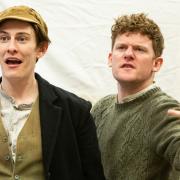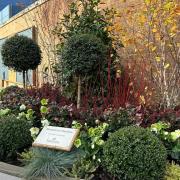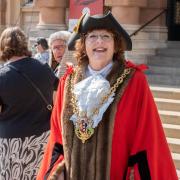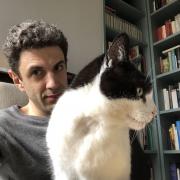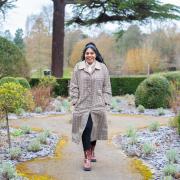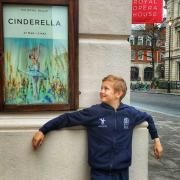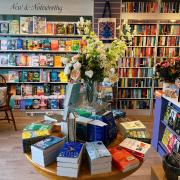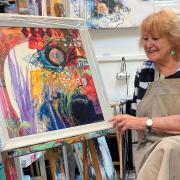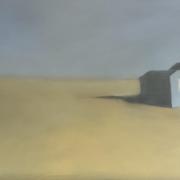Artist Rosemary Elliott likes to change direction from time to time – and there’s no better place than Suffolk to inspire her. Andrew Clarke talks to her about working with the county’s creative community and a forthcoming exhibition in Woodbridge

Artist Rosemary Elliott understands something about the creative pull that Suffolk has. Is it those big skies? Is it the light? Is it the shifting, beguiling nature of our heritage coast, or the beauty of our hedge-lined historic countryside?
Probably it is a combination of all these factors, along with myriad other elements, which lure people like Rosemary to this inspirational part of the world.
Rosemary has long been an East Anglian resident, living in Billericay in Essex, but was drawn north to Wingfield in 2007 having taught a stone carving course at Bawdsey Manor from 2003 to 2006.
“There is something about Suffolk. It’s endlessly inspirational. Also you are surrounded by like-minded souls. For all the years I lived in Essex I felt rather isolated. Invariably if you wanted to go to an exhibition or work with someone you had to travel. In Suffolk you have a much more nurturing artistic community all around you.”
Part of that nurturing community is Artists of the RA Alumni, an informal co-operative of Royal Academy trained artists who now live and work in Suffolk, Norfolk and Cambridge.
The group is having an autumn exhibition at Re+new Gallery in Woodbridge. Rosemary said that following a summer exhibition at Wingfield Barns, her own work is undergoing a dramatic change.
She is reluctant to give away much but feels that the time is right to stretch herself and explore new areas.
Although, she is now best known for her photo-real landscapes, for ten years, from the mid-90s, she gave up painting in order to explore stone-carving. This is another dramatic change of direction.
She trained at the Walthamstow School of Art before going on to The Royal Academy. Since then she has divided her time between painting and teaching. “It’s been a mixed career from arts school, into art teaching into further education, but then I saw an advert in a national newspaper for stone carving in Tout Quarry in Dorset.
“Hannah Sofaer, who has worked with artists like Anthony Gormley, set up installation work in the quarry in the ‘80s and ‘90s. So we took ourselves off to Tout Quarry.
“For eight years I stopped painting and learned the skills of stone carving. Having done that I came back and at the age of 62 applied for an Arts Council grant to develop stone carving in East Anglia.
“My friend, Ann Niels Toettcher, who owned Bawdsey Manor, offered the use of their art studio and we taught stone carving and sculpture there between 2003 and 2006.”
On the back of that experience she decided to move to Suffolk and become part of the county’s cultural community.
“I went back to painting in 2007 when the stone carving came to an end and now I want to draw a line under all that has gone before.”
“This may well be the last figurative exhibition I stage because this autumn I am going to incarcerate myself in my studio and just work away at a new series of paintings. Everything else is going to be packed away. This is both an end and a new start. This is a wonderful opportunity to move into new territory. I am so excited about that.”
She said the trigger for this change of direction was a series of mono-prints she had started working on earlier this year.
“I don’t really know what is going to happen. It may be that once I get going my comfort zone will start to kick in, but I hope that I will remain quite disciplined and resist.
“I am determined to step out into new work and I am finding it incredibly stimulating. I could go on making landscapes with a photo-real aspect to them, but I felt it was necessary to make a break and that came about though experimentation, by switching off and letting myself go, allowing myself to create abstractions from small parts of the painting.
“I wanted to move away from that highly labour-intensive, very detailed landscape work and create something entirely new. If I don’t do that now I am never going to do it.”
Although Rosemary is reluctant to reveal too much about her new work she does say that the new pieces will be based on natural forms and surfaces. “I am passionately interested in light and luminosity in paint and surface textures. I like to explore the way that light hits objects or people. I love looking out for conditions which provide me with interesting light to work with.
“I don’t want anyone to see behind the scenes, so to speak, until I have produced the work.”




